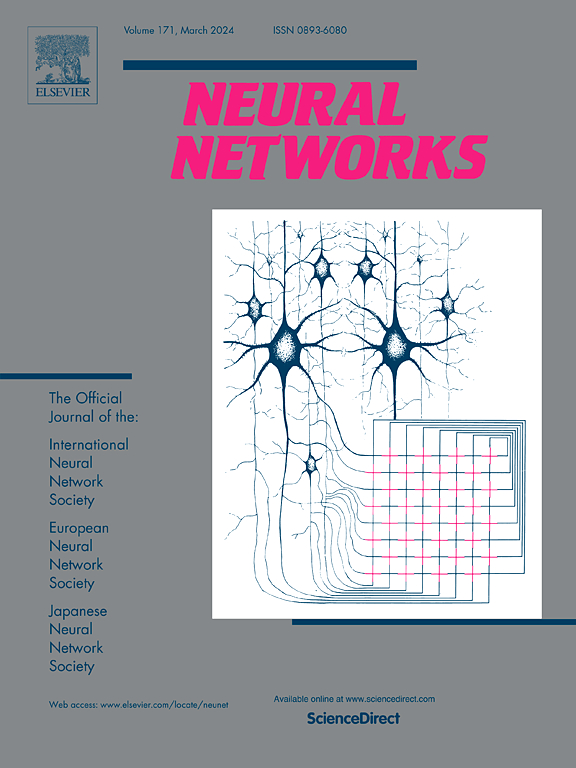将细胞水平的现象与大脑结构联系起来:以尖峰小脑控制器为例
IF 6
1区 计算机科学
Q1 COMPUTER SCIENCE, ARTIFICIAL INTELLIGENCE
引用次数: 0
摘要
将细胞水平的现象与大脑结构和行为联系起来是理论和计算神经科学的圣杯。最近,神经信息学的进步使科学家们能够将具有真实神经元模型和多种突触可塑性规则的小脑脉冲神经网络嵌入到感觉运动控制器中。通过最小化期望和实际感觉状态之间的距离(误差),并利用感觉预测,小脑网络获取有关身体-环境相互作用的知识并产生纠正信号。在此过程中,小脑实现了一种通用的计算算法,允许它在丰富的行为环境中“学习预测相关事件之间的时间”。可塑性变化一次又一次地进化,分布在多个突触上,调节神经元放电的时间,并在毫秒时间尺度上微调高速运动。因此,在研究小脑功能的各种计算方法中,尖峰小脑内置控制器有助于揭示网络学习和信号编码的细胞水平基础,为机器人的预测计算和自主学习开辟了新的领域。本文章由计算机程序翻译,如有差异,请以英文原文为准。
Linking cellular-level phenomena to brain architecture: the case of spiking cerebellar controllers
Linking cellular-level phenomena to brain architecture and behavior is a holy grail for theoretical and computational neuroscience. Advances in neuroinformatics have recently allowed scientists to embed spiking neural networks of the cerebellum with realistic neuron models and multiple synaptic plasticity rules into sensorimotor controllers. By minimizing the distance (error) between the desired and the actual sensory state, and exploiting the sensory prediction, the cerebellar network acquires knowledge about the body-environment interaction and generates corrective signals. In doing so, the cerebellum implements a generalized computational algorithm, allowing it "to learn to predict the timing between correlated events" in a rich set of behavioral contexts. Plastic changes evolve trial by trial and are distributed over multiple synapses, regulating the timing of neuronal discharge and fine-tuning high-speed movements on the millisecond timescale. Thus, spiking cerebellar built-in controllers, among various computational approaches to studying cerebellar function, are helping to reveal the cellular-level substrates of network learning and signal coding, opening new frontiers for predictive computing and autonomous learning in robots.
求助全文
通过发布文献求助,成功后即可免费获取论文全文。
去求助
来源期刊

Neural Networks
工程技术-计算机:人工智能
CiteScore
13.90
自引率
7.70%
发文量
425
审稿时长
67 days
期刊介绍:
Neural Networks is a platform that aims to foster an international community of scholars and practitioners interested in neural networks, deep learning, and other approaches to artificial intelligence and machine learning. Our journal invites submissions covering various aspects of neural networks research, from computational neuroscience and cognitive modeling to mathematical analyses and engineering applications. By providing a forum for interdisciplinary discussions between biology and technology, we aim to encourage the development of biologically-inspired artificial intelligence.
 求助内容:
求助内容: 应助结果提醒方式:
应助结果提醒方式:


